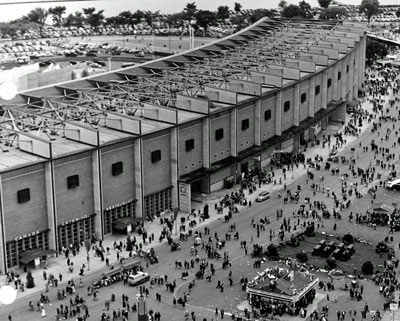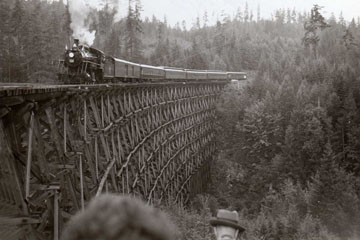Browse "Things"
-
Article
Canadian Museums Association
The Canadian Museums Association is the national association for museums and related institutions. It was begun on 29 May 1947, when founding president H.O.
"https://development.thecanadianencyclopedia.ca/images/tce_placeholder.jpg?v=e9dca980c9bdb3aa11e832e7ea94f5d9" // resources/views/front/categories/view.blade.php
https://development.thecanadianencyclopedia.ca/images/tce_placeholder.jpg?v=e9dca980c9bdb3aa11e832e7ea94f5d9
-
Article
Canadian Music Council
Founded in 1946 and incorporated in 1949, the Canadian Music Council worked as an umbrella organization for the musical profession, representing organizations of national scope, university departments and selected individuals. In 1959, the council created the Canadian Music Centre, which is still active today.
"https://development.thecanadianencyclopedia.ca/images/tce_placeholder.jpg?v=e9dca980c9bdb3aa11e832e7ea94f5d9" // resources/views/front/categories/view.blade.php
https://development.thecanadianencyclopedia.ca/images/tce_placeholder.jpg?v=e9dca980c9bdb3aa11e832e7ea94f5d9
-
Article
Canadian Music Educators' Association
The Canadian Music Educators' Association (CMEA)/Association canadienne des musiciens éducateurs (ACME) is a national organization central to the network of provincial music educators' associations.
"https://development.thecanadianencyclopedia.ca/images/tce_placeholder.jpg?v=e9dca980c9bdb3aa11e832e7ea94f5d9" // resources/views/front/categories/view.blade.php
https://development.thecanadianencyclopedia.ca/images/tce_placeholder.jpg?v=e9dca980c9bdb3aa11e832e7ea94f5d9
-
Article
Canadian Music Hall of Fame
The Canadian Music Hall of Fame was established in 1978 by the Canadian Academy of Recording Arts and Sciences (CARAS). It honours individuals or groups that have made an outstanding contribution to the international recognition of Canadian artists and music. For many years, a sole inductee was presented annually at the Juno Awards. Since 2019, multiple inductees have also been presented annually at a separate ceremony at the National Music Centre in Calgary.
"https://d2ttikhf7xbzbs.cloudfront.net/media/new_article_images/NationalMusicCentre/26137577257_571cc8e1b1_z.jpg" // resources/views/front/categories/view.blade.php
https://d2ttikhf7xbzbs.cloudfront.net/media/new_article_images/NationalMusicCentre/26137577257_571cc8e1b1_z.jpg
-
Article
Canadian Music Library Association/Association canadienne des bibliothèques musicales
Canadian Music Library Association (CMLA)/Association canadienne des bibliothèques musicales (ACBM). Founded in 1956 as a section of the Canadian Library Association, to establish contact between music librarians and carry out projects of interest to them.
"https://development.thecanadianencyclopedia.ca/images/tce_placeholder.jpg?v=e9dca980c9bdb3aa11e832e7ea94f5d9" // resources/views/front/categories/view.blade.php
https://development.thecanadianencyclopedia.ca/images/tce_placeholder.jpg?v=e9dca980c9bdb3aa11e832e7ea94f5d9
-
Article
Canadian National Exhibition
The Canadian National Exhibition, Canada's largest annual exhibition and the fifth largest in North America, is held in Toronto for 18 days in late August.
"https://d2ttikhf7xbzbs.cloudfront.net/media/media/ad68fb7f-1f51-43c2-aa3b-ecd2a6f1f526.jpg" // resources/views/front/categories/view.blade.php
https://d2ttikhf7xbzbs.cloudfront.net/media/media/ad68fb7f-1f51-43c2-aa3b-ecd2a6f1f526.jpg
-
Article
Music at the Canadian National Exhibition
From the early 1920s until the CNE Music Dept was established, the Canadian Bureau for the Advancement of Music helped to organize CNE music events, which were of three main kinds: 1/entertainment, 2/exhibition, and 3/competition.
"https://d2ttikhf7xbzbs.cloudfront.net/media/media/522ba824-994a-406a-a627-56ccf505c87d.jpg" // resources/views/front/categories/view.blade.php
https://d2ttikhf7xbzbs.cloudfront.net/media/media/522ba824-994a-406a-a627-56ccf505c87d.jpg
-
Article
Canadian National Institute for the Blind (CNIB)
Since its founding in 1918, the Canadian National Institute for the Blind (CNIB) has been creating programs, providing services and advocating on behalf of Canadians who are blind or partially sighted (see Blindness and Visual Impairment). The non-profit organization was founded and incorporated by a group of seven Canadian men — including several military veterans — in response to rising blindness rates caused by the Halifax Explosion and the number of wounded veterans returning home from the First World War.
"https://d2ttikhf7xbzbs.cloudfront.net/CNIB/braillelessoncnib.jpg" // resources/views/front/categories/view.blade.php
https://d2ttikhf7xbzbs.cloudfront.net/CNIB/braillelessoncnib.jpg
-
Article
Canadian National Land Settlement Association
On 6 June 1919, the Canadian National Railway Company (CN) was created by the federal government to consolidate private and government railway systems into one public organization (see Railway History in Canada). The mandate of CN was to provide rail service throughout Canada. The company also had many other functions, such as promoting immigration and land settlement. CN established the Colonization and Agriculture Department (1919–63) and its subsidiary organization, the Canadian National Land Settlement Association (1925–61) to stimulate immigration, labour and land settlement in Canada. Both organizations contributed to the movement of people and the establishment of new farms in Western Canada (see also History of Settlement in the Canadian Prairies).
"https://d2ttikhf7xbzbs.cloudfront.net/CNLSA/c036148.jpg" // resources/views/front/categories/view.blade.php
https://d2ttikhf7xbzbs.cloudfront.net/CNLSA/c036148.jpg
-
Article
Canadian National Railway (CN)
Canadian National Railway Company, incorporated 6 June 1919, is the longest railway system in North America, controlling more than 31,000 km of track in Canada and the United States. It is the only transcontinental rail network in North America, connecting to three coasts: Atlantic, Pacific and Gulf of Mexico. Known as Canadian National (CN), the former Crown corporation expanded its holdings to include marine operations, hotels, telecommunications and resource industries. However, the core of CN was still its railway system, which had its origins in the amalgamation of five financially troubled railways during the years 1917–23: the Grand Trunk and its subsidiary, the Grand Trunk Pacific; the Intercolonial; the Canadian Northern; and the National Transcontinental. In 1995, CN was sold to private investors. CN is primarily a rail freight company and transports approximately $250 billion worth of goods annually. In 2016, it earned over $12 billion in revenue and employed over 22,000 people in Canada and the US.
"https://d2ttikhf7xbzbs.cloudfront.net/media/media/ffb48914-8c79-474f-ad6b-5edb6ccc0cc6.jpg" // resources/views/front/categories/view.blade.php
https://d2ttikhf7xbzbs.cloudfront.net/media/media/ffb48914-8c79-474f-ad6b-5edb6ccc0cc6.jpg
-
Article
Canadian Naval Operations in the South-West Asia Theatre
From the Iraqi invasion of Kuwait in the summer of 1990 (see Persian Gulf War) until the withdrawal of forces from Afghanistan in 2014, the waters of South-West Asia were the operational focus of the Canadian navy. In that quarter-century, practically every major surface ship and the large majority of sailors deployed into the region at some point in their service. In many ways, it was the defining experience for a generation of Canadian sailors.
"https://d2ttikhf7xbzbs.cloudfront.net/media/media/5ec441fc-60aa-4fd9-a568-d53428bda0a1.jpg" // resources/views/front/categories/view.blade.php
https://d2ttikhf7xbzbs.cloudfront.net/media/media/5ec441fc-60aa-4fd9-a568-d53428bda0a1.jpg
-
Table
Canadian Nobel Laureates
Administered by the Nobel Foundation, the Nobel Prizes are awarded in six categories: physics, chemistry, physiology or medicine, literature, peace, and economic sciences. Seventeen Canadians have been awarded Nobel Prizes, excluding Canadian-born individuals who gave up their citizenship and members of organizations that have won the Nobel Peace Prize. (See also Nobel Prizes and Canada.)
"https://d2ttikhf7xbzbs.cloudfront.net/TCEImages/dreamstime_xl_127967744.jpg" // resources/views/front/categories/view.blade.php
https://d2ttikhf7xbzbs.cloudfront.net/TCEImages/dreamstime_xl_127967744.jpg
-
Article
Canadian Northern Railway
The Canadian Northern Railway started as a single Manitoba line of 84 miles (135 km) in 1896. In 1899, the railway received federal charter and was quickly developed by the railway entrepreneurs Sir William Mackenzie and Sir Donald Mann. By 1917, it had expanded to more than 9,000 miles (14,485 km) of track across seven provinces. Originally a major railway network over the Prairie provinces, the Canadian Northern Railway expanded into a transcontinental line with many supporting enterprises, including telegraph and steamship companies. (See also Railway History in Canada.)
"https://d2ttikhf7xbzbs.cloudfront.net/media/media/b1d9b093-5205-4fa7-9886-bf8da31e7062.jpg" // resources/views/front/categories/view.blade.php
https://d2ttikhf7xbzbs.cloudfront.net/media/media/b1d9b093-5205-4fa7-9886-bf8da31e7062.jpg
-
Editorial
Building the Canadian Northern Railway
The following article is an editorial written by The Canadian Encyclopedia staff. Editorials are not usually updated.
"https://d2ttikhf7xbzbs.cloudfront.net/media/media/e748f32b-1860-4bc4-b2b3-632a4370a944.jpg" // resources/views/front/categories/view.blade.php
https://d2ttikhf7xbzbs.cloudfront.net/media/media/e748f32b-1860-4bc4-b2b3-632a4370a944.jpg
-
Macleans
Canadian Nurse Slain in Chechnya
As the medical administrator of a RED CROSS field hospital in war-wracked Chechnya, Canadian nurse Nancy Malloy did a little bit of everything. One of her jobs was to ensure that the hospital did not run short of drugs or other medical supplies.This article was originally published in Maclean's Magazine on December 30, 1996
"https://development.thecanadianencyclopedia.ca/images/tce_placeholder.jpg?v=e9dca980c9bdb3aa11e832e7ea94f5d9" // resources/views/front/categories/view.blade.php
https://development.thecanadianencyclopedia.ca/images/tce_placeholder.jpg?v=e9dca980c9bdb3aa11e832e7ea94f5d9
